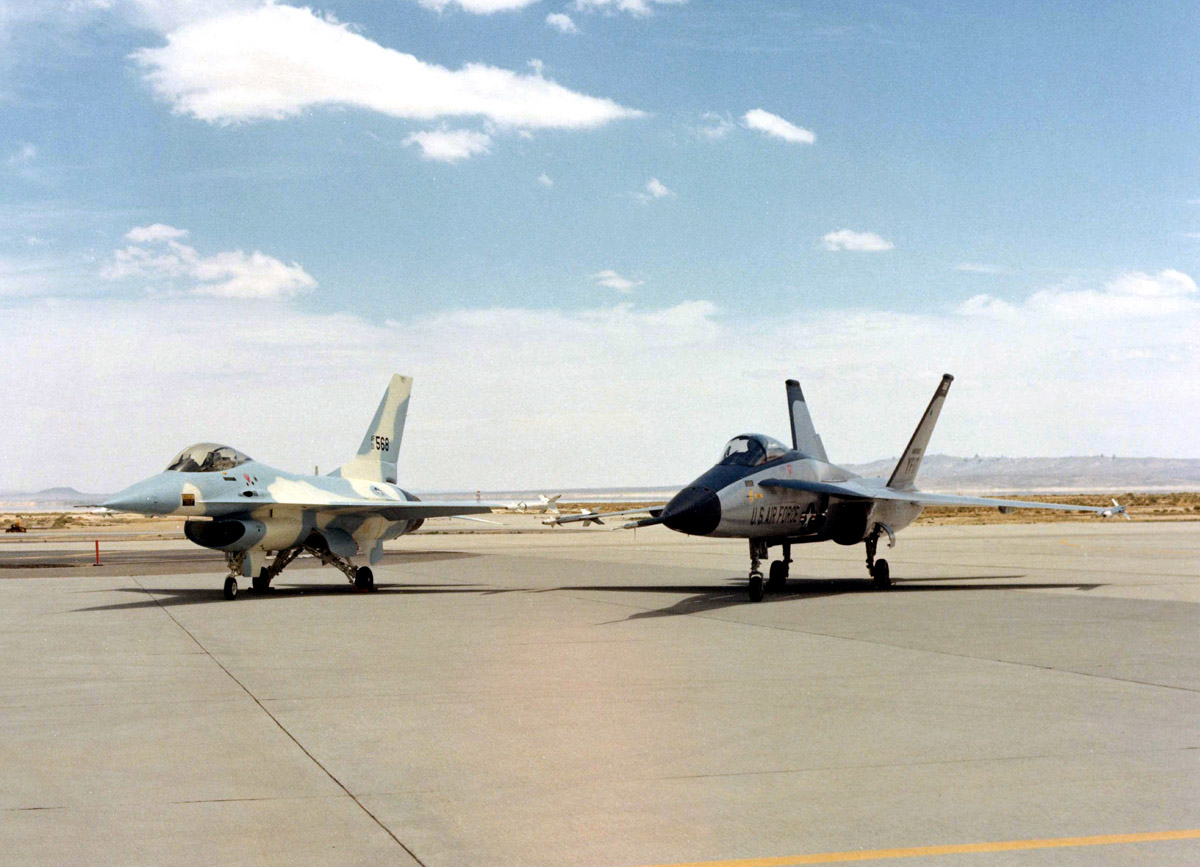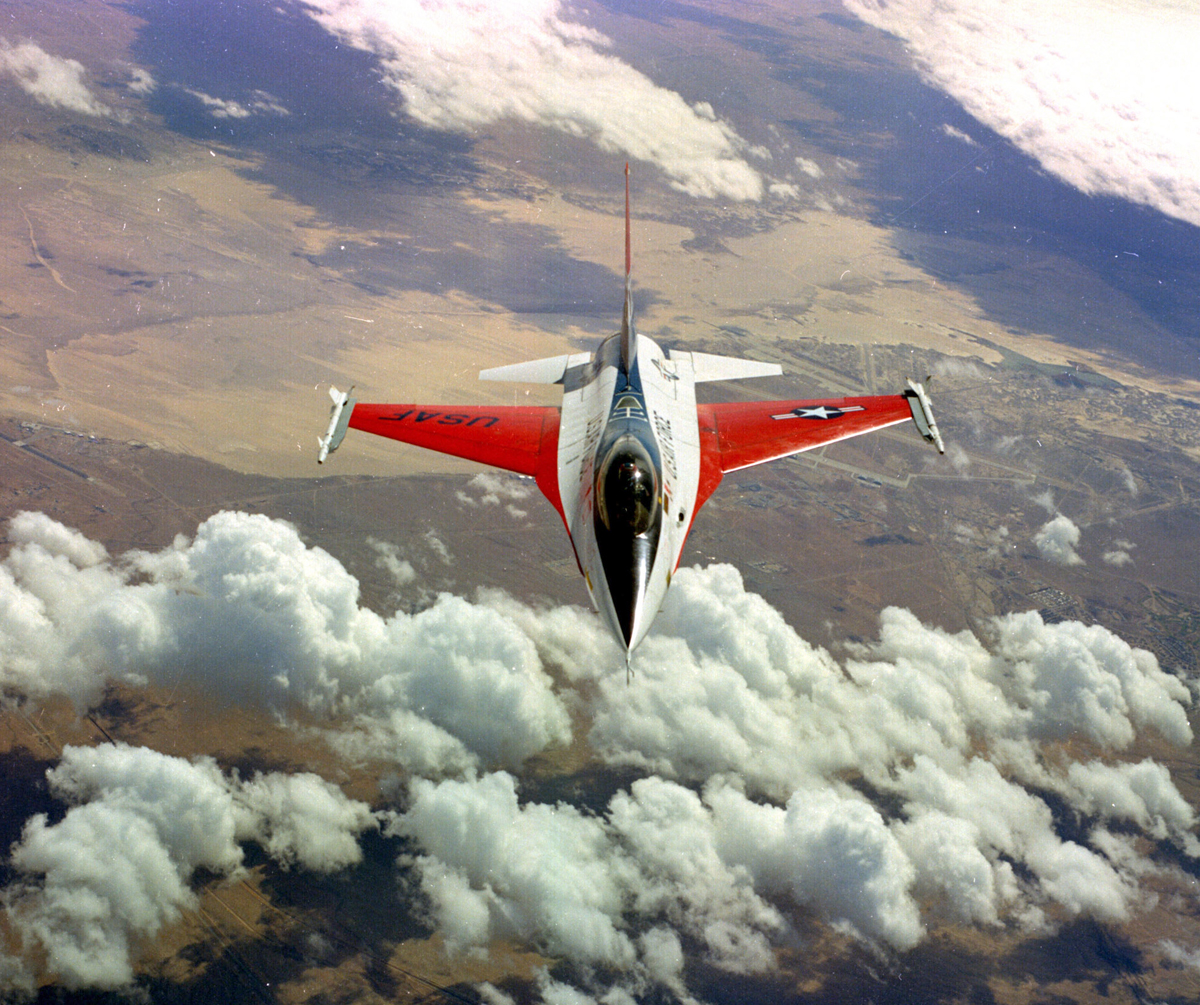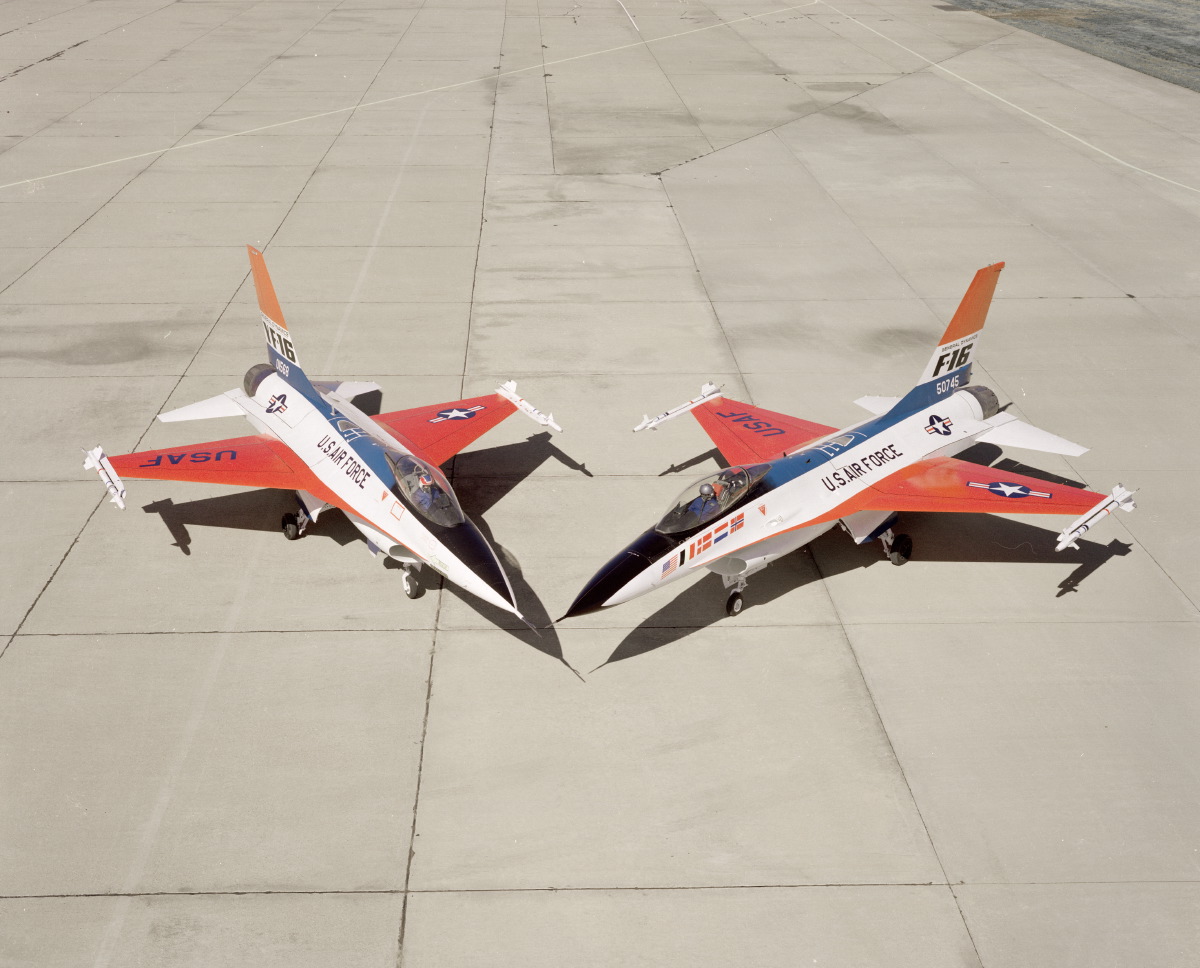Like every operation to demonstrate a new aircraft, the YF-16 test program had its share of thrilling events
The U.S. Air Force’s (USAF) Lightweight Fighter (LWF) program sought an air superiority day fighter that was compact, light, affordable, and easy to maintain. The LWF was conceived because many people in the fighter community thought that expensive and bulky aircraft like the F-15 Eagle were unsuitable for numerous combat roles.
The General Dynamics YF-16 and the Northrop YF-17 were the two aircraft in competition for the LFW program.

For the LWF competition, two single-seat YF-16 prototypes were created. The first YF-16 was unveiled in Fort Worth on December 13, 1973. It made its maiden flight unintentionally on January 24, 1974, and then on February 2, 1974, as intended. March 9, 1974, saw the first flight of the second prototype. On January 13, 1975, the F-16, now known as the Air Combat Fighter (ACF) program because the LWF program had been renamed, won the fly-off against the Northrop YF-17 prototypes.
As Lou Drendel explains in his book F-16 Fighting Falcon In Action, the YF-16 test program had its share of thrilling events, just like every effort to prove a new aircraft. In two different cases, impurities in the fuel control units drove the F-100 engine to idle thrust, forcing the test pilots to perform dead-stick landings.

“One landing was made from 15,000 feet, on the USAF pilot’s first flight in an F-16, and the other from 1,500 feet, shortly after take-off,” says Drendel. “In neither case was the aircraft damaged. As the program progressed, it became increasingly evident that the YF-16 was going to rewrite the book on air combat maneuvering. It was possible to pull so many Gs, so fast, that the normal G-suit pressure regulator could not keep up, and a newer, faster-acting regulator that could inflate the G-suits at a rate that could keep up with the airplane’s capabilities had to be installed.”
The two YF-16s gained altitude in air battle against one another (most dogfights progress to lower altitudes as the fight occurs). “Starting at 15,000 feet, test pilots generally managed to work the fight up to 30,000 feet. Test pilot Phil Oestricher demonstrated consecutive Immelmann turns, beginning at 5,000 feet and leveling off at 25,000 feet. He indicated that a third Immelmann would have been possible,” continues Drendel. “No fighter then in operational service could have performed such a maneuver.”

A very high rate of test flights was kept up during the whole test program. Six flights were made in a single day within a period of 47 flights in 31 days. Drendel: “This was only possible because of the high degree of reliability of the YF-16’s systems. That reliability was made possible by the fact that many of the systems came from operational aircraft, which also enabled General Dynamics to hold down costs. YF-16s used an environmental control system from the A-7, control actuators from the F-111, the nose wheel from the F-4, main gear wheels and tires from the B-58, an air starter from the C-5, and the ejection seat, air data computer, generator drive and engine from the F-15.”
The USAF chose the F-16 because of these aspects, as well as the F-100 engine’s proven reliability and employment in the F-15, as well as its shown performance superiority in acceleration and overall in the transonic drag regime. After deliberating, the Navy decided to use the F/A-18, a YF-17 variant.
“Much of the resistance to an Air Force buy of the lightweight fighter had centered around the theory that it would only be an American MiG-21… small, with good acceleration and turning capability, but short on range and severely limited in diversity. When the performance of the prototypes indicated that the F-16 would exceed the MiG-21 in all categories, with none of its performance shortcomings, the Air Force did a 180 degree and began to look forward to adding the F-16 to its inventory,” concludes Drendel.
Photo by Lockheed Martin

